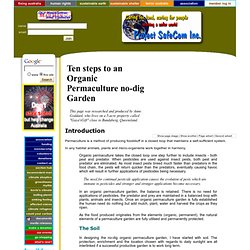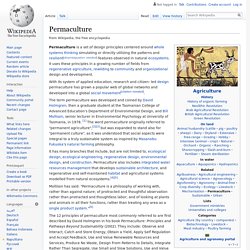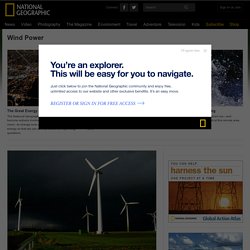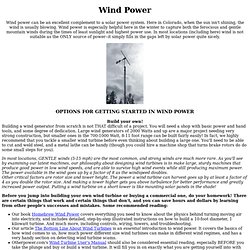

Off-the-grid. The term off-grid refers to not being connected to a grid, mainly used in terms of not being connected to the main or national electrical grid.

In electricity, off-grid can be stand-alone systems (SHS) or mini-grids typically to provide a smaller community with electricity. Off-grid electrification is an approach to access electricity used in countries and areas with little access to electricity, due to scattered or distant population. It can be any kind of electricity generation. The term off-the-grid (OTG) can refer to living in a self-sufficient manner without reliance on one or more public utilities. Off-the-grid homes are autonomous; they do not rely on municipal water supply, sewer, natural gas, electrical power grid, or similar utility services. Electrical power[edit] Water[edit] On-site water sources can include a well, stream, or lake.
Popularity[edit] Environmental impact[edit] Off the Grid Store. Off Grid Survival – Wilderness & Urban Survival Skills. Permaculture: Ten steps to an Organic no-dig Garden. Organic permaculture takes the closed loop one step further to include insects - both pest and predator.

When pesticides are used against insect pests, both pest and predator are eliminated. As most insect pests breed much faster than predators in the food chain, the pests will return quicker than the predators, eventually causing havoc which will result in further applications of pesticides being necessary. The need for continual pesticide application causes the evolution of pests which are immune to pesticides and stronger and stronger applications become necessary. In an organic permaculture garden, the balance is retained. There is no need for applications of pesticides, the predator and prey are maintained in a balanced loop with plants, animals and insects. As the food produced originates from the elements (organic, permanent), the natural elements of a permaculture garden are fully utilised and permanently protected.
The Soil Chickens Worm farms Compost Heaps or Bins. Permaculture principles. With its system of applied education, research and citizen- led design permaculture has grown a popular web of global networks and developed into a global social movement[citation needed].

The term permaculture was developed and coined by David Holmgren, then a graduate student at the Tasmanian College of Advanced Education's Department of Environmental Design, and Bill Mollison, senior lecturer in Environmental Psychology at University of Tasmania, in 1978. [1] The word permaculture originally referred to "permanent agriculture",[3] but was expanded to stand also for "permanent culture", as it was understood that social aspects were integral to a truly sustainable system as inspired by Masanobu Fukuoka’s natural farming philosophy.
It has many branches that include, but are not limited to, ecological design, ecological engineering, regenerative design, environmental design, and construction. History[edit] Several individuals revolutionized the branch of permaculture. In Australian P.A. Permaculture. A Low Impact Woodland Home. Hydroelectricity - How We Get Hydropower Energy.
Hydroelectricity has been around for close to 100 years. Hydropower energy has been utilized for over thousands of years. In the United States, hydropower energy is the primary source for electricity. How does it work? Hydropower uses flowing water to create energy that can be captured and turned into electricity. Hydropower provides the largest source of renewable energy in the United States.
The most common type of hydropower plant uses a dam on a river to store water in a reservoir; this is called Impoundment hydropower. Hydropower Fundamentals The major components of a hydroelectric dam are as follows: 1. A barrier built across a watercourse to hold back the flow of water and create a reservoir. Hydroelectricity. Hydroelectricity is the term referring to electricity generated by hydropower; the production of electrical power through the use of the gravitational force of falling or flowing water.

It is the most widely used form of renewable energy, accounting for 16 percent of global electricity generation – 3,427 terawatt-hours of electricity production in 2010,[1] and is expected to increase about 3.1% each year for the next 25 years. Hydropower is produced in 150 countries, with the Asia-Pacific region generating 32 percent of global hydropower in 2010. China is the largest hydroelectricity producer, with 721 terawatt-hours of production in 2010, representing around 17 percent of domestic electricity use. There are now four hydroelectricity stations larger than 10 GW: the Three Gorges Dam and Xiluodu Dam in China, Itaipu Dam across the Brazil/Paraguay border, and Guri Dam in Venezuela.[1]
Wind Power Information, Wind Power Facts. Wind is the movement of air from an area of high pressure to an area of low pressure.

In fact, wind exists because the sun unevenly heats the surface of the Earth. As hot air rises, cooler air moves in to fill the void. As long as the sun shines, the wind will blow. And as long as the wind blows, people will harness it to power their lives. Wind Power. Wind power can be an excellent complement to a solar power system.

Here in Colorado, when the sun isn't shining, the wind is usually blowing. Solar Power at Home. Alternative energy solutions for homeowners. Solar Power at Home. Alternative energy solutions for homeowners. Renewable Energy & Efficiency Technologies. Off The Grid News » Better Ideas For Off The Grid Living. Living Off The Grid: Tips for Off-Grid Home Owners. Living Off the Grid: Free Yourself.